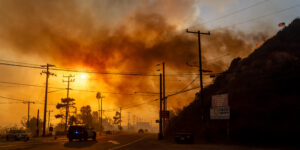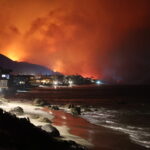A new report indicates loss cost across all perils combined grew for the fourth year in a row in 2022, according to the latest LexisNexis “U.S. Home Trends Report.”
The 8th annual report on home insurance trends provides by-peril and state-specific loss cost, frequency and severity claims data, highlighted a seven-year trend showing a steady increase over time.
Based on property exposures and losses for the seven-year period between 2016 through 2022, the report highlights the extreme weather events and rising inflation had on home insurance claims in 2022.
The report found that year-over-year, loss cost only decreased for one of the eight perils—weather-related water—in 2022. Loss costs decreased sharply by 64.4 percent from 2021 to 2022 for weather-related water claims.
All-peril severity rose 9.6 percent year over year in 2022 as 97 percent of catastrophic losses resulted from hail, wind and weather-related water perils.
Loss costs associated with hail claims increased by 35.5 percent from 2021 to 2022, with 64.7 percent occurring in the second quarter. There were three billion-dollar hailstorms in the U.S. in 2022.
Loss costs and frequency peaked sharply in May, following seven years of seasonal trends, according to the data analysis.
Catastrophe claims accounted for just 7 percent of fire and lightning losses in 2022, down from 11.2 percent in 2021.
Texas accounted for more than one-fifth (21.9 percent) of all catastrophe-related hail claims, related to severe thunderstorms in February that dropped golf ball-sized hailstones, blowing out windows in homes and damaging cars.
Minnesota and South Dakota experienced the highest loss costs in 2022, followed by Nebraska, Florida and Arkansas, the analysis showed.
Wind loss costs increased 21 percent and severity increased 19.6 percent from 2021 to 2022. Frequency increased by 1.1 percent year-over-year from 2021, according to the report.
The top five states for fire and lightning related catastrophe and non-catastrophe loss costs were: California, Washington D.C., Arkansas, Colorado and Maryland.
The report found that hurricane paths are shifting upward, putting previously safe communities at risk.
Regions in northern Florida and along the Georgia and Carolina coasts, typically accustomed to indirect hurricane consequences, now face unexpected direct impacts.
Data on shifts in climate patterns is crucial to understanding the changing risks. As hurricane frequency is predicted to rise, more states, including those in the north, will be vulnerable to shifts in climate patterns.
LexisNexis said that it is critical for carriers to have peril-related trend information on hand in order to “better assess their books of business within market context.”




















 Moody’s Global P/C Outlook Now Stable Despite Past-Peak Commercial Pricing
Moody’s Global P/C Outlook Now Stable Despite Past-Peak Commercial Pricing  Mixed Bag: What Trump 2.0 Tariffs, DOGE Activities Mean For Insurers
Mixed Bag: What Trump 2.0 Tariffs, DOGE Activities Mean For Insurers  California Wildfires Will Likely Lead to Large Economic and Insured Losses
California Wildfires Will Likely Lead to Large Economic and Insured Losses  Musk’s Massive Tesla Lithium Plant Hunts for Water in Drought-Hit Texas
Musk’s Massive Tesla Lithium Plant Hunts for Water in Drought-Hit Texas 